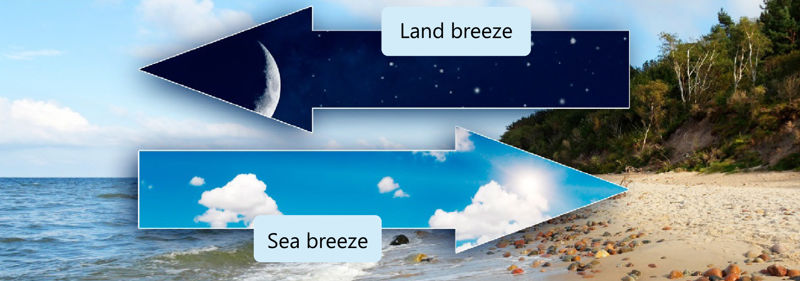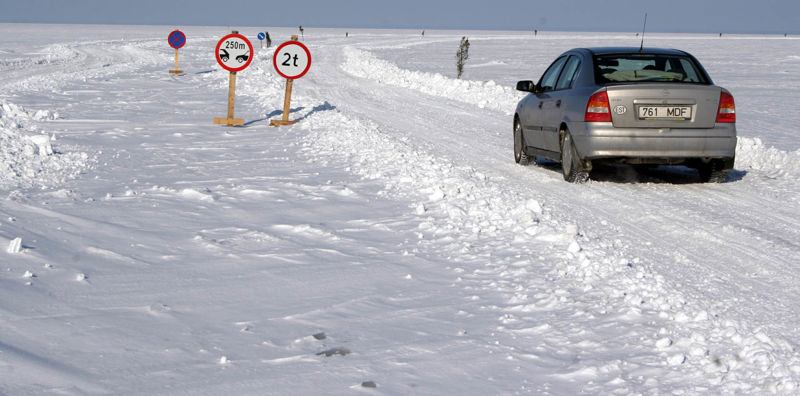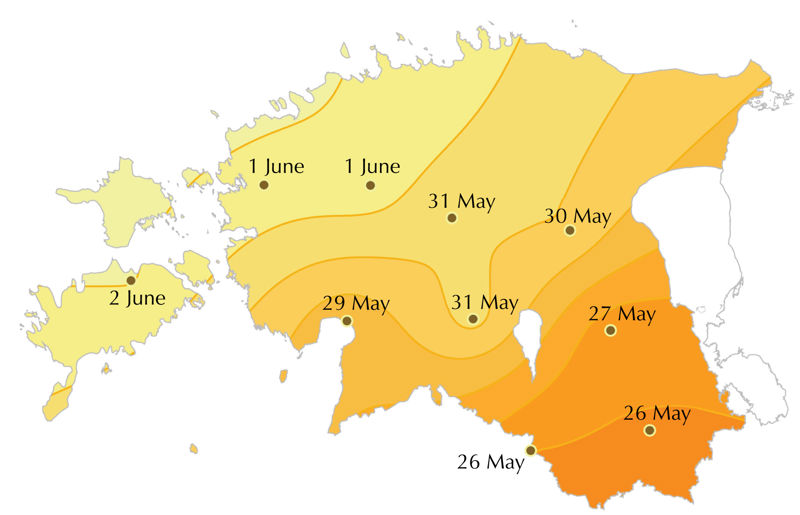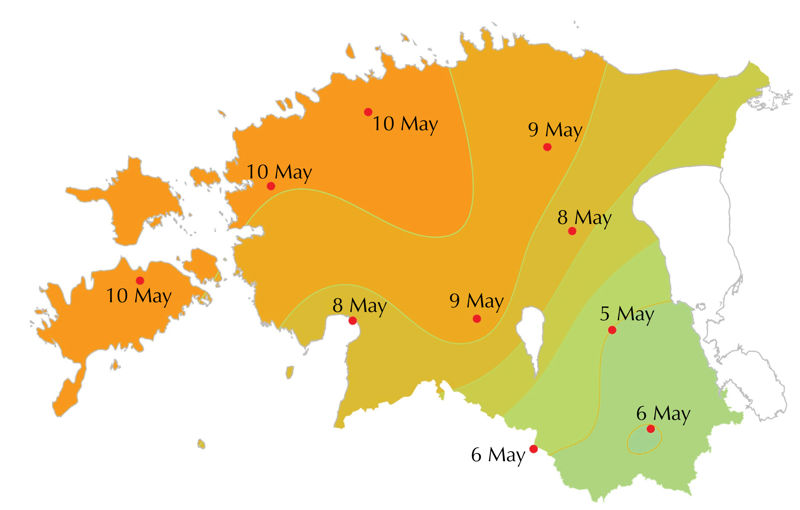- How does the sea affect the weather?
- What is a breeze?
- Why does spring arrive later on the coast than inland?
It is windy by the sea
You have probably noticed that the beach sand starts to heat up quickly in the morning on a hot summer day. However, you can't go swimming yet, because the water is still quite cold. Why is it like that? The sun's rays are absorbed only in the top layer of the earth, which heats up quickly. The water heats up much more slowly over the water because the waves mix the water of the warmed upper layers with the colder water from the lower layers.
The wind's direction on the coast is determined by the fact that the water does not heat up or cool down as fast as the ground. During the day, therefore, the air temperature above the sea is usually lower than on the coast, and the wind blows from the sea to the land, i.e. the sea wind or sea breeze blows. At night, however, the air cools faster above ground than at sea. Thus, at night and early morning, the wind blows more often from the land to the sea, i.e. the land wind or land breeze.

Air masses that come from the sea carry a lot of water vapour. The air near the sea is much more humid and the weather windier than inland. The air temperature fluctuates less there because the seawater that warms during the day helps keep the heat above the coast at night. During the day, the cooler air coming from above the sea does not allow the air temperature to rise rapidly.
A year by the sea
The spring sun warms both land and seawater. Slowly warming water delays the arrival of summer in coastal areas later than inland.
The water temperature rises to the highest level on the hot summer days of July, when the high angle of the sun has kept the weather warm for several months. The water temperature near the coast is on average 16–18°C, but it can be much higher in the shallow bays (above 25°C).
Compared to land, the sea cools more slowly in autumn, and the water temperature stays higher than the surrounding air temperature. Therefore, the summer heat lasts longer near the beach than in areas far from the sea.
In winter, frost first covers shallow bays. Ice usually appears in the lower and fresher parts of the coast of the Gulf of Finland around New Year's Eve. The further west and south, the later the ice crust forms. In Pärnu Bay, the sea usually stays free of ice for almost a month longer than in the eastern part of the Gulf of Finland. In the centre of the Baltic Sea, the open sea rarely freezes; it happens only in very harsh winters.

Ice cover usually starts to recede in April. The waves bring large clumps of ice to the beach and sometimes press them into high piles, some as high as a multi-storey building. Ice has a crushing force, it can move large boulders lying on the beach and damage houses built near the coastline.
Think!
- What is the difference between the spring weather on the coast and inland? What about the autumn weather?
Spring arriveson the islands and the coast than than inland because the sea heats upthan land. Autumn arriveson the islands and the coast than inland because the sea cools downthan land.
Important terms
- sea breeze – wind that blows from the sea towards land during the day
- land breeze – wind that blows from the land towards the sea during the night
I now know that…
During the day, the wind blows from the sea to the land; this is a sea breeze. At night, the wind blows from the land to the sea; this is a land breeze. Air masses arriving from the sea carry a lot of water vapour. On the coast, the spring is usually late, and the autumn is long.



